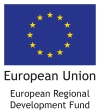Project result in category -
Reduction of nutrients, hazardous substances and toxins inflow into the Baltic
SEABASED helped to improve the status of marine area by reducing nutrients from the seabed
Eutrophication is one of the most large-scale problems of the Baltic Sea. While the nutrient load from land-based sources has been cut significantly during past decades, nutrients that are stored in the seabed and are being released from the sediment back to the waterbody.
The SEABASED Project (2018-2021) examined and assessed measures that potentially improve the status of marine area by reducing this “internal load” of nutrients from the seabed. The project also strengthened cooperation and shared knowledge between scientific communities as well as among authorities, political decision makers and third sector actors of the region on the feasibility, risks, and sustainability of the different sea-based approaches in different scales and sea areas, as well as on their financial sustainability.
The project implemented the following small scale local pilots in Finland, Åland and Sweden:
- Marl application to phosphorus-rich bottom sediments in coastal bays in Sweden (Kyrkviken, Djuröfladen, Farstaviken) and Finland (Kolkka) (Ekeroth 2021). The pilots and its outcomes are presented in the report.
- Irrigation of two fields in Åland for two seasons, 2019 and 2020, with brackish, nutrient-rich near-bottom water from the strongly eutrophicated bays Kaldersfjärden and Ämnäsviken. The pilot's main goal was to evaluate this sea-based method for reducing nutrients in the marine environment and restore the coastal areas into better conditions while presenting a win-win solution for the farmers and the Baltic Sea. More information about approach, measurements and results in the report Nutrients from Sea to Field.
- Harvesting of stickleback was piloted in Sweden and Åland with the aim to uptake nutrients with the fish biomass, and, in addition, to develop techniques to efficiently harvest the abundant population of these small fish. The report for the stickleback harvesting can be accessed here. Short video about this pilot and lessons learnt.
In addition to stickleback harvesting, the construction of artificial reef structures and small- scale wetlands, “pike factories” aiming to improve the condition of coastal ecosystem in pilot bays to be more suitable for spawning and “nursery” of young generations of pike and other predatory fish which spawn in shallow sea bays. Video presenting the aim of the artificial reefs.
- Removing the top layer of the sediment was planned but it was not possible to implement because proposed prices were too high. Instead, the potential of sediment top-layer removal for phosphorus uptake and reducing the oxygen demand in the bottom was studied with incubation tests in laboratory scale. The report is available here. The study on the incubation of the sediment.
The concept for aquatic compensations was designed, related to the renovation of the Water Act in Åland. More information in the final report Nutrient compensation for aquatic coastal environment — legal, ecological and economic aspects in developing an offsetting concept.
The practical and scientific knowledge, including estimates on impacts and sustainability, risks, costs, and feasibility of available sea-based measures gained in the SEABASED and previous projects is compiled as in the Practical Guidelines for Sea-based Measures.
More information about the project results in the project website at www.seabasedmeasures.eu
List and links to the materials produced in the project.
Project page in database
At a glance
The SEABASED Project (2018-2021) examined and assessed measures that potentially improve the status of marine area by reducing this “internal load” of nutrients from the seabed.
Files
Tags


